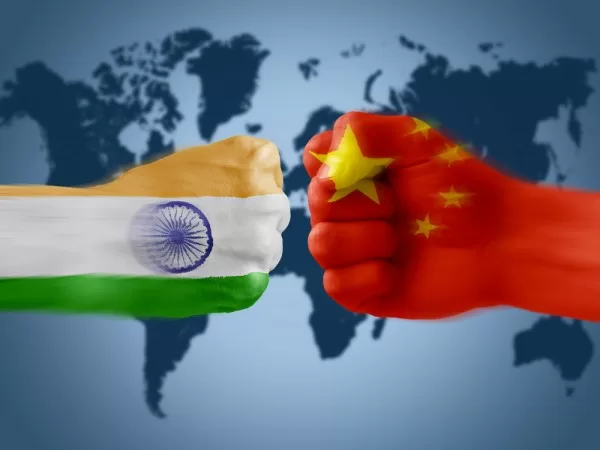
India and China, two of the world’s most populous countries, have carved out significant roles in the global economy. With their vast populations and rapidly growing economies, these nations are home to some of the world’s wealthiest individuals. Let’s explore their business landscapes and the billionaires driving their economic growth.
India’s Business Landscape
India’s economy is characterized by its diversity, covering sectors like services, manufacturing, and agriculture. This diversity is reflected in its list of top billionaires, who span various industries from oil and gas to technology and pharmaceuticals.
Key Strengths of India:
- Diverse Economy: India’s economic landscape is multi-faceted, featuring a strong presence in sectors such as technology, pharmaceuticals, and heavy industries. Notable billionaires include Mukesh Ambani, with a net worth of $116 billion, leading Reliance Industries in oil and gas. Also, Shiv Nadar of HCL Technologies, with a net worth of $31.2 billion, showcasing India’s strength in IT services. Additionally, Dilip Shanghvi of Sun Pharma, with a net worth of $24.3 billion, highlights the pharmaceutical sector’s importance.
- Skilled Workforce: India’s large pool of educated professionals is a significant asset, particularly in knowledge-driven sectors like IT and pharmaceuticals. This skilled workforce has enabled companies such as HCL Technologies to thrive globally.
- Growing Consumer Market: With a young population and rising middle class, India offers a robust consumer base. Billionaires like R.K. Damani, founder of DMart, with a net worth of $20.2 billion, have capitalized on the domestic consumption boom, establishing strong footholds in the retail sector.
- Strategic Geographic Location: Positioned between the Middle East, Africa, and Asia, India benefits from strategic trade routes and access to major markets. Thus, enhancing its global trade potential.
Weaknesses in India’s Economy:
- Bureaucratic Red Tape: Bureaucratic inefficiencies continue to impede India’s business environment, affecting foreign investment and slowing down infrastructure projects.
- Infrastructure Challenges: Although improving, India’s infrastructure still lags behind, particularly in transportation and energy, which affects business operations and economic efficiency.
- Corruption: Corruption remains a pervasive issue, undermining investor confidence and creating barriers to fair competition.
- Dependence on Foreign Investment: While beneficial, India’s reliance on foreign capital exposes it to global economic shifts, impacting growth and stability.

China’s Business Landscape
China stands as the world’s second-largest economy, renowned for its manufacturing capabilities and rapid technological advancements. Its billionaires, who lead some of the world’s largest and most innovative companies, reflect its economic strengths.
Key Strengths of China:
- Manufacturing Powerhouse: China is globally recognized for its large-scale manufacturing, driven by billionaires like Lei Jun of Xiaomi, with a net worth of $15.2 billion, and Wang Chuanfu of BYD, with a net worth of $15.6 billion. These companies symbolize China’s dominance in electronics and electric vehicles.
- High-Tech Industries: China’s tech sector has seen explosive growth, with leaders like Zhang Yiming, founder of ByteDance, holding a net worth of $43.4 billion, and Colin Huang of Pinduoduo, worth $55.5 billion, steering innovation in digital platforms and e-commerce.
- Extensive Infrastructure: China has invested heavily in infrastructure, providing a robust foundation for business operations and positioning itself as a global trade leader.
- Second-Largest Economy Globally: With a massive economic output, China plays a critical role in global finance and trade, offering a significant market for multinational companies.
Weaknesses in China’s Economy:
- Over-Reliance on Exports: China’s heavy dependence on exports makes it vulnerable to global market fluctuations and trade disputes, such as those involving the United States.
- Intellectual Property Issues: Concerns over intellectual property rights persist, potentially deterring foreign investment and collaboration in high-tech sectors.
- Environmental and Labor Challenges: Rapid industrialization has led to environmental degradation and labor issues, which have sparked both domestic and international criticism.
Comparative Overview: India vs China Billionaires
The wealth distribution among billionaires in India and China reflects the broader economic characteristics of each country.
- India’s Top Billionaires: The list is led by Mukesh Ambani ($116 billion) and Gautam Adani ($88.7 billion), both representing major industrial conglomerates, followed by Savitri Jindal and Family ($38.2 billion) from the OP Jindal Group. Their industries span oil, gas, energy, and metals, highlighting India’s strengths in these sectors.
- China’s Top Billionaires: Leading the list is Zhong Shanshan of Nongfu Spring with $64.3 billion, followed by Colin Huang of Pinduoduo at $55.5 billion and Zhang Yiming of ByteDance at $43.4 billion. This reflects China’s focus on consumer goods, technology, and digital innovation.
Economic Indicators and Keywords Analysis
The economic dynamics between India and China can be further examined through key indicators like currency strength, GDP, and population. The exchange rate of the Chinese Yuan (RMB) to INR is frequently monitored, given its implications for trade and investment. Keywords such as “1962 India-China war who won,” “China and India population,” and “China vs India GDP” highlight the ongoing interest in both historical contexts and economic competitiveness.
China vs India economy comparisons often delve into GDP figures, growth rates, and sectoral strengths, while China vs India population discussions focus on demographic shifts and future economic potential. These keywords help underscore the competitive and comparative nature of their economies.
Conclusion: China vs India
Both India and China continue to shape the global economic landscape, driven by their dynamic business environments and wealthy entrepreneurs. While China leads in manufacturing and technology, India’s diverse economy and growing consumer market position it as a formidable economic force. The billionaire figures from both nations illustrate their respective economic strengths and potential for future growth.
The China vs India economic narrative is one of competition and opportunity, reflecting their unique paths in the global economy. As these two nations continue to evolve, their impact on global trade, finance, and industry will be profound and lasting.





